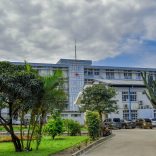Mozambique: Aid desperately needed, armed groups must cease attacks on civilians - Refugees ...
INGC faces deficit of 650 million meticais – Mozambique

The Mozambican relief agency, the National Disasters Management Institute (INGC), is facing a deficit of 650 million meticais (about 9.2 million US dollars) to deal with possible extreme weather events in the current rainy season.
Every year the government draws up a contingency plan for the rainy season, which runs from October through to the following March, with three possible scenarios, from least to most serious.
This year the second scenario, regarded as the most likely, was costed at 810 million meticais, but to date the INGC only has 160 million meticais guaranteed. The wettest months are usually January and February, and there are fears of possible flooding on some of the country’s main rivers.
On Friday morning, Foreign Minister Oldemiro Baloi chaired a meeting with members of the diplomatc corps and the country’s cooperation partners, in an attempt to mobilize more resources to overcome the deficit.
Speaking to reporters, the INGC general director, Joao Machatine said the minimum scenario involved continuing drought in parts of the country, but storms and localized flooding in other parts. The second scenario adds more serious flooding and the occurrence of cyclones. The worst case scenario posits the occurrence of an earthquake on top of the storms, floods and cyclones.
Machatine said that forecasts indicated that the second scenario, in which around 1.4 million people would be affected, was the most likely, and dealing with it required 810 million meticais. The large deficit “is a great challenge, not only for the government, but also for the partners because they too participated in drawing up the contingency plan”, he stressed.
Machatine believes that the resources required would be forthcoming. “There is hope that the partners will contribute”, he said. “We believe that the partners don’t look at natural disasters as a situation exclusive to Mozambique. It’s a universal question. We believe we will have a response that lives up to our expectations”.
Machatine added that the INGC is also relying on collaboration from the Mozambican business class and civil society. Such collaboration need not necessarily take the form of money. Education and health kits, agricultural inputs and water supply equipment were also welcome. “There are various ways of contributing to overcome this deficit, in cash and in kind”, he said.
As for the 2016 drought in southern and central Mozambique, caused by the El Nino weather phenomenon, Machatine said the situation is more or less under control. 204 million US dollars had been needed to assist drought-stricken people until March 2017, with food aid, water supplies, and the distribution of seeds.
So far 148 million dollars had been mobilized, Machatine said. Added to the government’s contribution, that should be enough to provide food aid at least until March, and the start of the 2017 harvests.
Baloi told reporters that the government has been working to put the contingency plan into operation despite the scarce resources.
“The government decided to call its partners to this meeting”, he said, “so that together we can reflect on the best way to minimize the suffering of the most vulnerable communities”, he said.












Leave a Reply
Be the First to Comment!
You must be logged in to post a comment.
You must be logged in to post a comment.